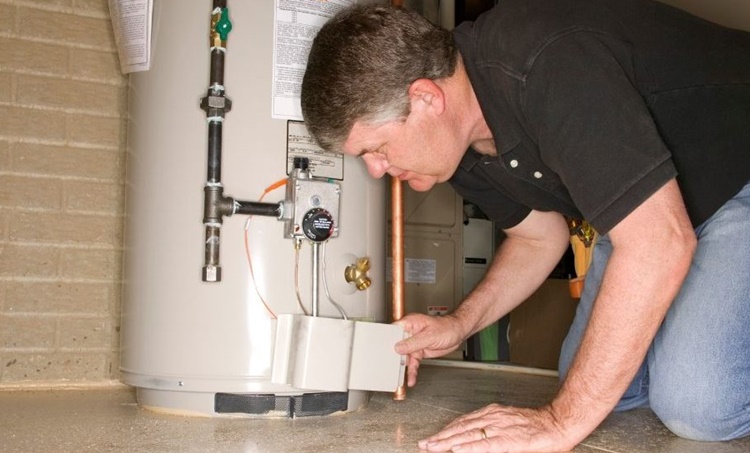Simple Steps to Maintaining Your Home's Hot Water SystemHow to Keep Your Home's Hot Water System in Good Condition
Simple Steps to Maintaining Your Home's Hot Water SystemHow to Keep Your Home's Hot Water System in Good Condition
Blog Article
Every person may have their own individual perception with regards to Tips on Maintaining a Water Heater.

Warm water is crucial for everyday convenience, whether it's for a revitalizing shower or cleaning meals. To ensure your warm water system runs effectively and lasts longer, normal upkeep is key. This post supplies useful tips and insights on how to keep your home's hot water system to avoid disturbances and pricey repair services.
Intro
Maintaining your home's warm water system may seem daunting, yet with a few simple steps, you can ensure it runs smoothly for several years to find. This guide covers every little thing from comprehending your warm water system to DIY upkeep suggestions and knowing when to call professional aid.
Significance of Keeping Your Hot Water System
Normal maintenance not just prolongs the life-span of your hot water system yet likewise ensures it operates effectively. Neglecting upkeep can lead to reduced efficiency, greater energy bills, and also early failure of the system.
Indicators Your Hot Water System Requirements Maintenance
Recognizing when your warm water system needs focus can avoid significant issues. Watch out for signs such as irregular water temperature, unusual sounds from the heating unit, or corroded water.
Recognizing Your Hot Water System
Prior to diving right into upkeep tasks, it's helpful to recognize the basic components of your warm water system. Usually, this includes the hot water heater itself, pipelines, anode poles, and temperature controls.
Monthly Maintenance Tasks
Routine month-to-month checks can help capture small problems before they intensify.
Purging the Hot Water Heater
Flushing your hot water heater gets rid of debris build-up, enhancing efficiency and lengthening its life.
Checking and Changing Anode Rods
Anode rods protect against deterioration inside the tank. Checking and changing them when worn is crucial.
Examining and Readjusting Temperature Level Setups
Adjusting the temperature level setups ensures optimal efficiency and safety.
DIY Tips for Upkeep
You can perform a number of upkeep tasks on your own to keep your warm water system in leading condition.
Checking for Leakages
Frequently examine pipes and connections for leaks, as these can result in water damage and higher bills.
Testing Pressure Relief Valves
Testing the pressure relief valve ensures it works properly and avoids extreme pressure accumulation.
Protecting Pipes
Protecting warm water pipes decreases warmth loss and can conserve power.
When to Call a Specialist
While do it yourself maintenance is helpful, some problems require professional proficiency.
Facility Concerns Calling For Specialist Aid
Instances include major leaks, electrical problems, or if your water heater is consistently underperforming.
Routine Professional Maintenance Advantages
Expert maintenance can include thorough examinations, tune-ups, and guaranteeing conformity with safety and security criteria.
Verdict
Regular upkeep of your home's warm water system is crucial for performance, durability, and price savings. By adhering to these pointers and understanding when to look for professional aid, you can make certain a reliable supply of warm water without unanticipated disruptions.
How to Maintain an Instant Hot Water Heater
Before tinkering with your hot water heater, make sure that it’s not powered on. You also have to turn off the main circuit breaker and shut off the main gas line to prevent accidents. Also turn off the water valves connected to your unit to prevent water from flowing into and out of the appliance. 2. When you’re done, you have to detach the purge valves’ caps. These look like the letter “T” and are situated on either side of the water valves. Doing so will release any pressure that has accumulated inside the valves while at the same time avoid hot water from shooting out and burning your skin. 3. When the purge valves’ caps are removed, you have to connect your hosing lines to the valves. Your unit should have come with three hoses but if it didn’t, you can purchase these things from any hardware or home repair shops. You can also get them from retail stores that sell water heating systems. Read the user’s manual and follow it to complete this task properly. When the hosing lines are connected, open the purge port’s valves. 4. You should never use harsh chemical cleaners or solutions when cleaning your unit. Make use of white vinegar instead. It should be undiluted and you’ll probably use about 2 gallons. 5. Now flush your water heater. This task should probably take about 40 minutes. We can’t give you specific directions for this because the procedure is carried out depending on the type, model and brand of your heater. With that being said, refer to the user’s manual. 6. When you’re done draining the unit, you have to turn off the purge port valves again. Remove the hosing lines that you earlier installed on each of the water valves. Put the valve caps (purge port) back in their respective places and be very careful so as not to damage the rubber discs that are found inside these caps. 7. Now that everything’s back in place, check your user’s manual again to find out how to reactivate your water heating system. 8. Once it is working, turn one of your hot water faucets on just to let air pass through the heater’s water supply pipes. Leave the tap on until water flows smoothly out of it. https://www.orrplumbing.com/blog/2014/september/how-to-maintain-an-instant-hot-water-heater/

I came across that article about How to Maintain Your Water Heater & Prolong its Life when browsing the internet. Are you aware of somebody else who is fascinated with How to Maintain a Hot Water Heater in a Few Simple Steps? Please feel free to share it. Thank you for your time invested reading it.
Book 24/7 Report this page